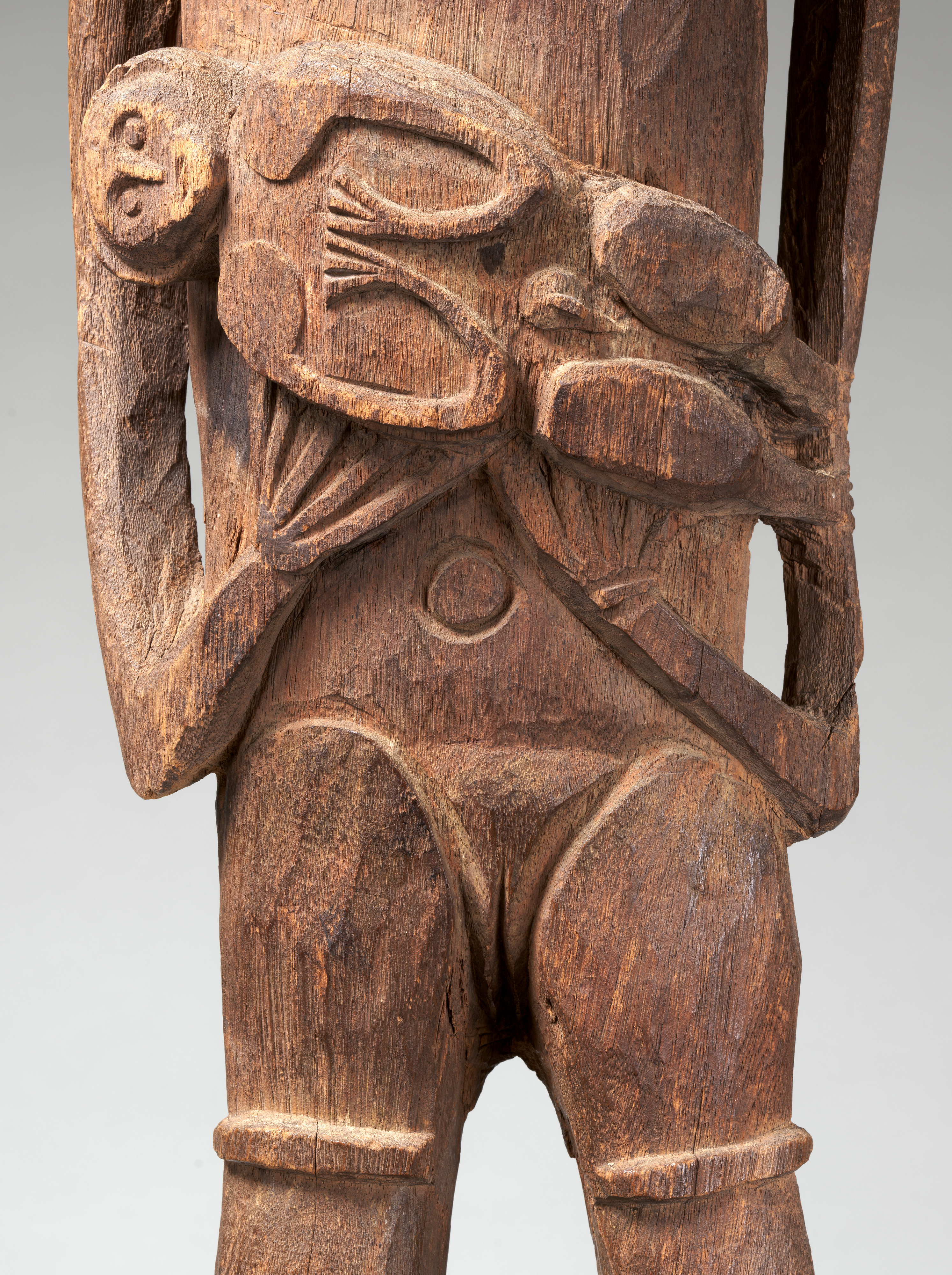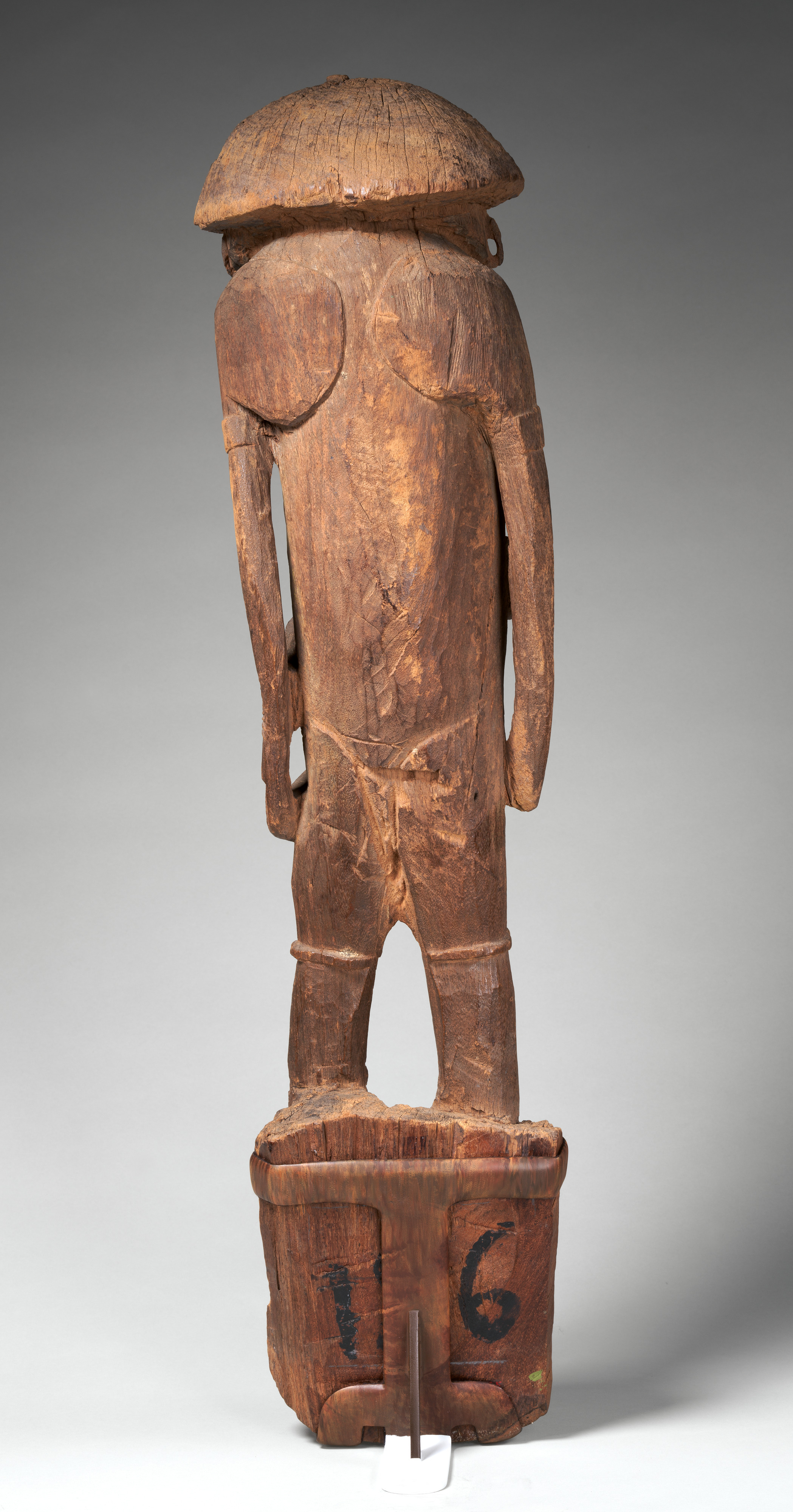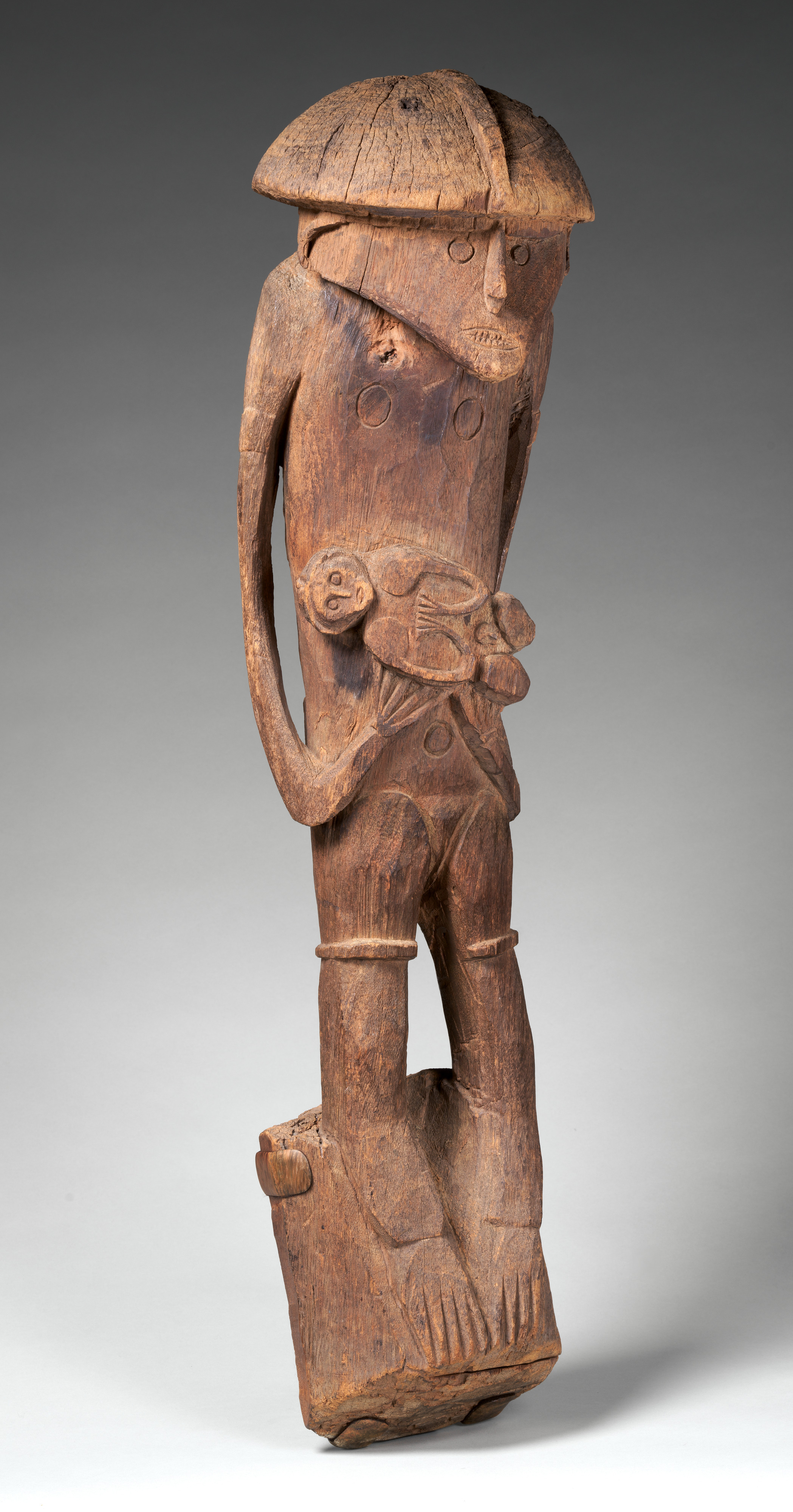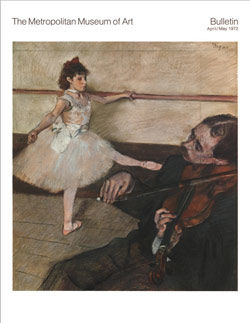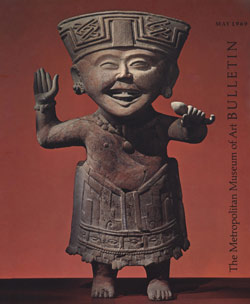House Post Figure
Not on view
This sculpture once formed the top of a wooden beam that supported a house in Kabiterau village on Lake Sentani. The carving depicts a female figure holding an infant in her hands just above the navel. Simple circular forms indicate her breasts, and on the back are strong shoulder blades carved in low relief. Her face tapers sharply to form the chin, in opposition to the distinctively round head, which may depict the typical coiffure of Sentani women. Her arms and torso are thin and elongated, as are the hands which delicately prop up the child. The infant’s hands and arms are similarly elongated, and its detailed face mirrors the mother’s with a pointed chin, perfectly circular eyes, and round head. Both figures have long toes at the end of feet which flatten at a dramatic angle – the child’s toes grip onto the mother’s biceps, while the mother’s feet rest firmly on a rounded base, merging with the post that would have disappeared from view through an opening in the floor. Each of the mother’s strong, rounded thighs is delineated by a band in high relief – perhaps referencing Sentani body adornment or possibly indicating the point at which the sculpture connected to the floor of the house. Communities in the Lake Sentani region of northwest New Guinea built their houses on tall wooden posts that elevated the floor above the water. In Sentani cosmology, the first generation of humankind emerged from the ground, just as this female figure emerges from beneath the house. There are only a handful of these posts depicting a mother with child, which may signal the continuation of new generations into the future. On the other hand, scholar Christian Kauffman has argued this is not a mother and child per se, but a representation of the clan as a whole, descended from founding ancestors.
This sculpture once belonged to Jacques Viot and later his collaborator Pierre Loeb, both members of the Surrealist movement in the 1920s and 30s. Viot (1889-1973) was an art dealer who organized some of the first surrealist exhibitions in Paris in the mid-1920s. In part to repay a series of mounting debts to Pierre Loeb – who owned the gallery where these momentous exhibitions occurred – Viot travelled to Dutch New Guinea in 1929 in order to purchase artworks that could later be sold in Loeb’s gallery. Upon his return, Viot and Leob organized several exhibitions of Sentani art, even commissioning the surrealist Man Ray to photograph one of the pieces (a copy of which is in the Photographic Study Collection in the Michael C. Rockefeller Wing at the Met – PSC 2004.8). Oceanic art inspired many Surrealists, who found the seemingly radical and transgressive aesthetics of Pacific visual and material culture to perfectly exemplify the break from European traditions they sought to achieve in their own practice. The diverse materials that are used in combination with one another – including shell, feather, wood, paint, hair, bone, and natural fibers – was likened to the Surrealist techniques of assemblage and collage. Unlike African art, which by that time had become rather "mainstream," Oceanic art was seen as new and exciting, imbued with a transformative potential that could be harnessed by Surrealists in Europe, who filled their private collections with pieces from the region. In the context of northwest New Guinea, art production and ceremony are indeed transformative and capable of harnessing the generative energy of ancestors. This house post, for instance, was capable of mediating between the world of the living and that of the ancestors, transforming the interior of a house into a powerful, sacred space.
Due to rights restrictions, this image cannot be enlarged, viewed at full screen, or downloaded.
This artwork is meant to be viewed from right to left. Scroll left to view more.


